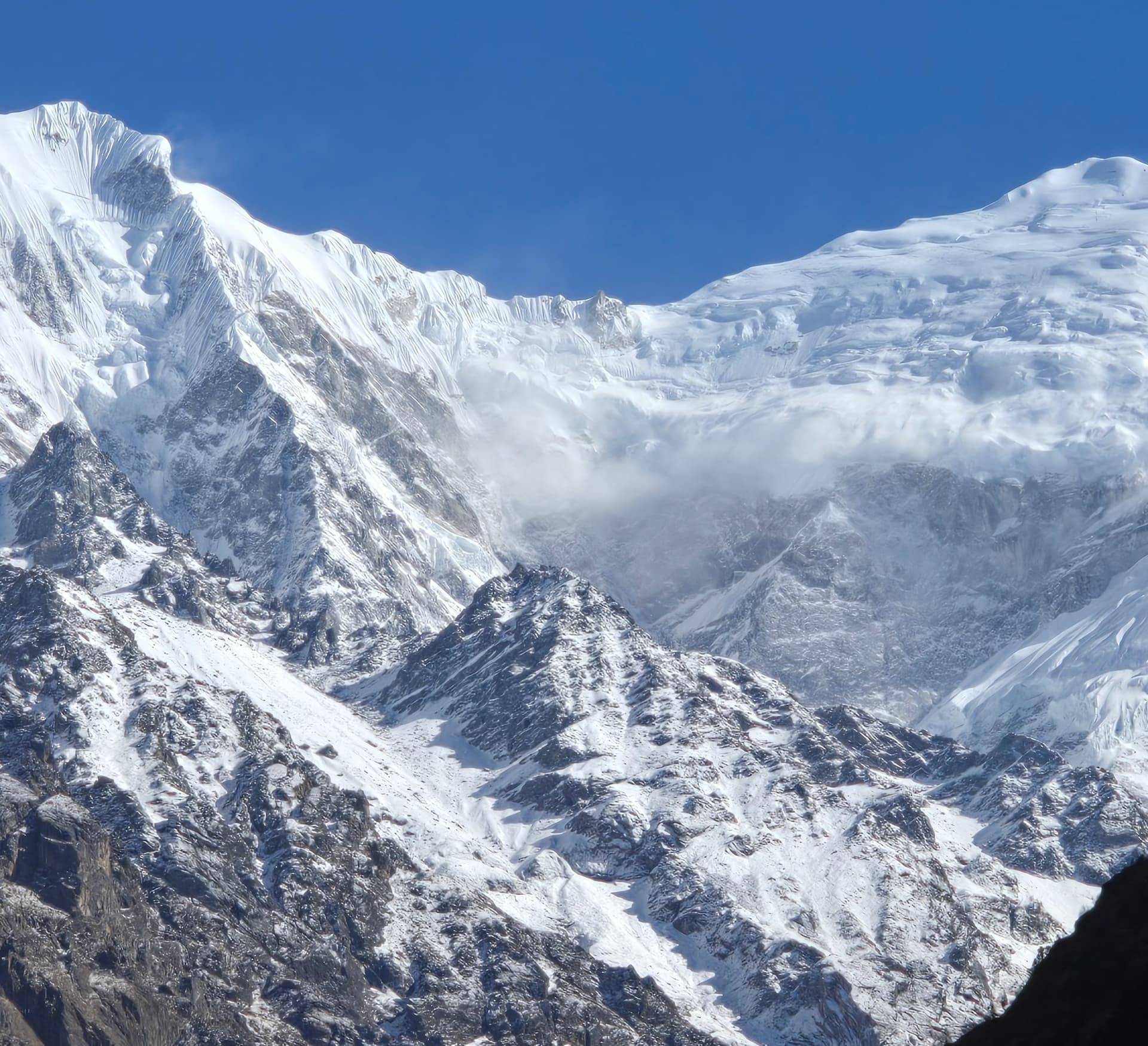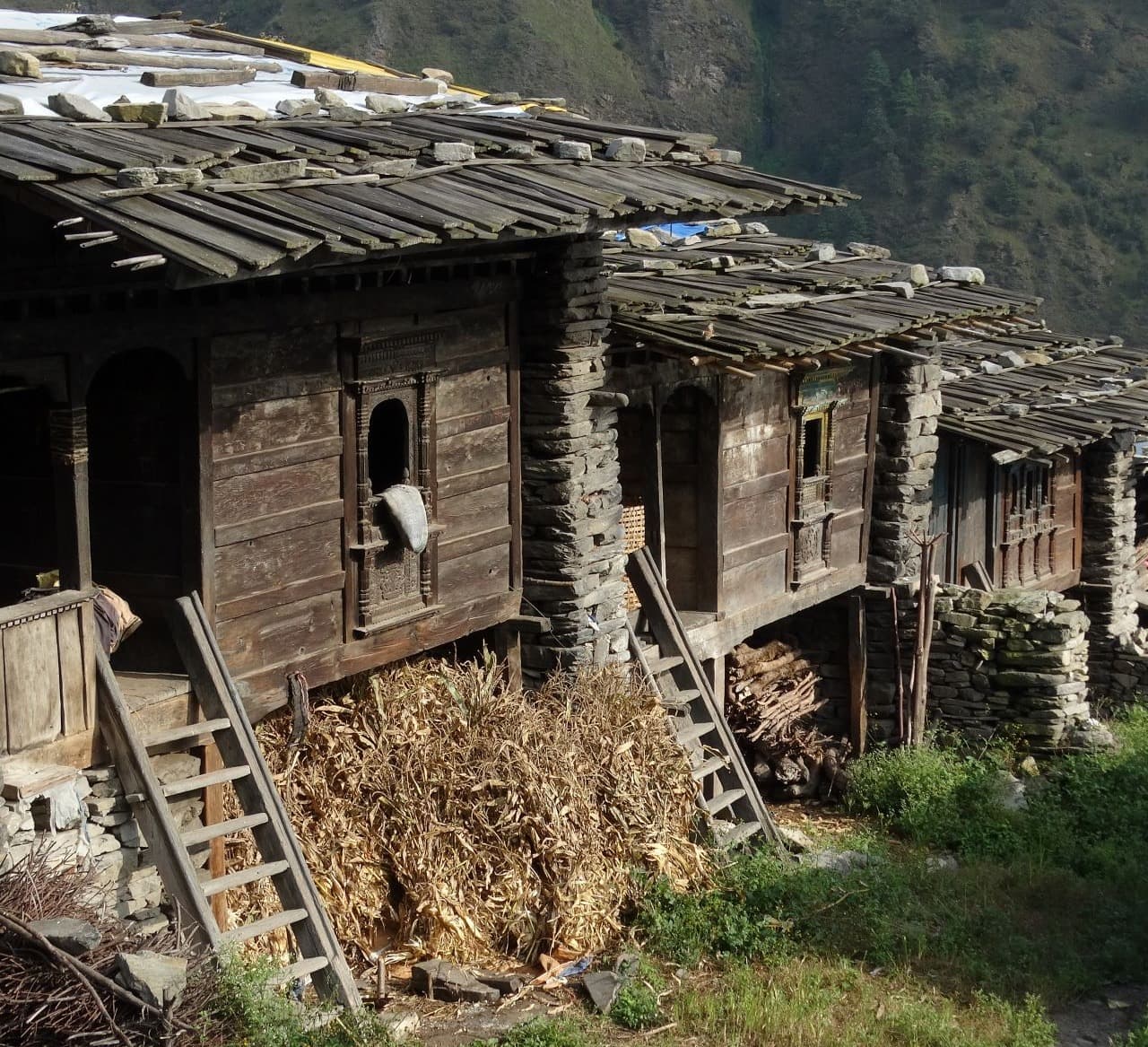About Gosaikunda Lake
Paired with the honor of being a high-hat lake at an altitude of 4,380 meters (14,370 feet) above the sea, Gosaikunda Lake cradles itself in the Langtang National Park of Nepal. It is across religions and is mostly called holy by both Hindus and Buddhists, as it comes at the apex of the religious fervor. For them, it is a pilgrimage site that thousands visit once a year during the Gosaikunda Mela, a religious fair celebrated every year in August on the full moon day. This lake, believed to wash away one's sins and illness, is visited by thousands of Adam ascetics during the pilgrimage to the holy water.
The impressive close-up views that one might have of the tranquil lake create an immortal, majestic, and perfect panorama, surrounded by towering snow-peaked mountains such as Langtang Lirung and Ganesh Himal. It is soothingly moody, infallibly calm in its consistently clear unnamed reflective turquoise waters. This area constitutes alpine meadows, wooded forests, and wildlife, the Himalayan tahr, and red pandas. It does not only depict scenic beauty; it also bears a notation of real cultural and spiritual significance, showing the close ties of its people with the natural setting.
Best Time to Trek
Trekking to Gosaikunda is best in spring (mid-March to May) or autumn (September to November), the two trekking seasons most weather-friendly.
In spring, the temperature is conducive, and the bright trails, some sparkling with several blooming rhododendrons and wildflowers, make the whole environment vibrant and colorful. Most of the time, the sky will be clear, providing magnificent views of the peaks in the vicinity. The last very good reason for this season is good weather for pleasant scenery.
Another fine season for trekking, autumn, offers clearer skies and has moderate temperatures with very little rain. Hiking conditions are great while the views of the snow-capped mountains are simply breathtaking. Crisp clear visibility along with crisp mountain air creates heaven for the trekkers and all this happens when Downing and Tihar are celebrated in Nepal, adding to the cultural frosting on the cake of your trip.
Winter - December to February- requires much determination and endurance to trek in severe cold and snow. Therefore, trekking during winter will usually result in solitude and a greater experience for the few who dare to step out during the freezing months.
June to August is monsoon season, and heavy rains deter trek-loving folks since they render trails slippery and leech-infested. Landslides during this time can also threaten the safety and enjoyment of the whole trekking activity.
So, generally, spring and autumn make times for fair weather and beautiful scenery during a trip to Gosaikunda Lake.
Travel Permits
Gosaikunda Lake trek requires two permits that must be acquired before your journey begins. These permits are very important in ensuring that you trek within the legal framework and help protect the natural resources and cultural heritage of the region.
Langtang National Park Entry Permit
Since the Gosaikunda Lake trek lies within Langtang National Park, every trekker is required to obtain an entry permit for it after entering the park. This entry permits a trekker access to the protected areas in the national park and contributes its part to the conservation fund of this protected area. The entry fee for the Langtang National Park differs by nationality, but on average, an international trekker will be charged between NPR 3,000 and 5,000. These permits can be taken either from the Nepal Tourism Board office in Kathmandu or from the park's entrance in Syabrubensi.
TIMS (Trekkers' Information Management System) Card
The TIMS card is a compulsory requirement for all the trekkers in Nepal. It is to improve the safety and security of trekkers. The card would be issued by Trekking Agencies' Association of Nepal (TAAN) for trekking and tracking in case of any emergencies. The rates for this card are around NPR 1000 for a single trekker and NPR 600 for grouped trekkers. This gets the card through the TAAN office in Kathmandu.
These two permits also protect the environment and local people and ensure a safe trekking experience. It is best to have these permits before you decide to go on the trek, either through a trekking agency or directly at the relevant offices in Kathmandu.
Health and Safety
Acclimatization is really important for trekking to Gosaikunda Lake so that altitude sickness does not strike. Because the lake is at quite a height from the sea level (4,380m), the above can reduce risk by gradual ascension, hydration, and refraining from infrequent rest days that may be needed. Such symptoms as headaches or dizziness should be taken seriously if they appear, and in case they do not go away, descent to a lower altitude becomes essential. Carry a first-aid kit with simple medications and all-encompassing travel insurance, covering high-altitude trekking and emergency evacuation.
Hydration and food breaks become obligatory moments during the trek. Carry water purification tablets or a filter and energy snacks to maintain your energy level during the whole trip. Weather changes can occur very quickly in some areas; hence, always dress in layers to adapt to those temperature changes. It is always safer to trek with a guide for the right assistance in any emergencies. Vaccinations are strongly recommended before entering Nepal. These precautions are all in place to ensure a healthy and safe trek to Gosaikunda Lake.
Physical Fitness
Physically, being fit is one of the most important things when it comes to preparing for the Gosaikunda Lake trek. This trek is real, and one needs a high level of stamina, endurance, and strength due to high-altitude terrain variations. It would be favorable to train a few weeks before such a trip for this specific kind of physical preparation. Cardiovascular improvement techniques such as running, cycling, and fast walking may increase your stamina, as well as train you for days on end of walking, before the trip. Incorporate strength training such as squats, lunges, and leg presses in developing the muscles you need to trek both up and down, and add hill or stair climbing as part of your workout routine because it mimics some of the very steep rises that will be found on the trail.
If you are thinking of building endurance as well, you may want to include some long and continuous bouts of exercise, right up to the day of your trek; long periods, multi-hour, would be ideal for everything from walking to hiking. It may also involve practice with weight on the back while hiking to simulate what one will experience and prepare the body for carrying equipment. Stretching exercises or yoga may be combined with flexibility and balance exercises to improve mobility and possibly minimize injury.
Besides this, being fit would not only make trekking just pretty easily excruciating but also bring down the chances of getting tired or injured during high-altitude trekking.
Food and Accommodation in Trek
Food and lodging accommodations are usually simple along the route but can be enjoyed by experiencing this trek in reality.
Foods:
Along the trek, there are numerous local foods at the tea houses and lodges. Normally, you'll have dal bhat (lentil soup with rice) for meals, which is a basic food providing high energy for trekking people. Other popular items include momos(dumplings), soups, Tibetan bread, etc. In general, porridge, toast, or eggs with tea or coffee would cover the breakfast. As you climb up, you may see a limited variation of foods, although you'll still find hearty meals fueling your energy during the trek. It is very crucial at this elevation to keep drink intake high to prevent dehydration.
Accommodation:
Gosaikunda Lake trek offers simple tea houses or lodges earmarked for already simple room halls completed with rough wooden floors and common bathroom entries. Normally, you would get a bed with a blanket inside, but bringing your sleeping bag would be an added comfort. The entire structure would serve as a warm resting place at the end of the long trekking day, where one meets the local people and gets to experience the warm hospitality of the Tamangs and Sherpas. This stay is simple yet comfortable, but it is important to know before the fact that these facilities become very basic, especially at great heights. The higher you go, the more rustic the accommodation becomes.
Local Culture and Etiquette
The etiquette and customs manifested in the local culture spice up the complete trekking experience, especially of Gosaikunda Lake, to the traditions influenced by the local communities known as Tamang and Sherpa, who now inhabit the area of Langtang. These are Tibetan Buddhists, and much of the cultural observance that goes with the beautiful belief is spiritually oriented. With knowledge and respect for such customs, this could just be an extra adventure in itself, creating ever-so-warm relations with the people.
The customs and practices mentioned should guide the trek through the villages: on such occasions as when entering monasteries or places of worship, one should ensure that no hats or sunglasses are worn, but never point one's feet toward religious objects or people. Generally speaking, photographs are permitted, but express your request for a photograph of the local people, especially when found in places not easily accessible. A local greeting includes joining hands, like in prayer, and saying "Namaste" or "Tashi Delek."
Whoever passes on the right of the person on the trail, especially monks or aged ones, is said to be doing the most respectable act, the most auspicious and beautiful in Tibetan culture. There are also other small bits of interchange like gifting or donating a few coins at the shrines, which are useful not so much, if not always so much, but are still praiseworthy. Dress plainly while in the land of religion, and try to keep the sound down in this quiet spiritual setting.
No one is in actual need of any tips, though it would be quite nice to leave a little something to porters, guides, and tea house owners, provided their services meet your expectations. Simply being polite would be the only way to guarantee dignity and harmony with the locals and thus reward the freshness of your trekking experience.
Packing List for Trek
This is a packing list for Gosaikunda Lake Short trekking, which has listed almost everything you need to keep for safe and comfortable travel. It is important to ensure that your luggage is light because you will be trekking at a high altitude.
Clothing
- Base layers
- Trekking shirts
- Trekking pants
- Thermal or fleece jacket
- Down jacket
- Waterproof and windproof jacket
- Lightweight waterproof pants
- Trekking boots
- Camp shoes or sandals
- Warm hat
- Sun hat
- Gloves
- Socks
- Buff or scarf
- Gaiters
Trekking Gear
- Backpack
- Daypack
- Sleeping bag
- Trekking poles
Optional Items
- Water bottles
- Water purification tablets or a water filter
- Headlamp or flashlight
- Sunglasses
- Sunscreen
- Lip balm with SPF
- First aid kit
- Personal hygiene items
- Toilet paper
- Snacks
- Camera or smartphone
- Power bank
- Notebook and pen
- Trekking map
- Trekking guidebook
- Earplugs
- Extra camera gear
- Trekking guidebook or journal
- Duct tape
Essential Documents
- Passport
- Travel insurance
- Permits (Langtang National Park entry permit and TIMS card)
- Cash
- Photocopies of your passport, visa, and permits




